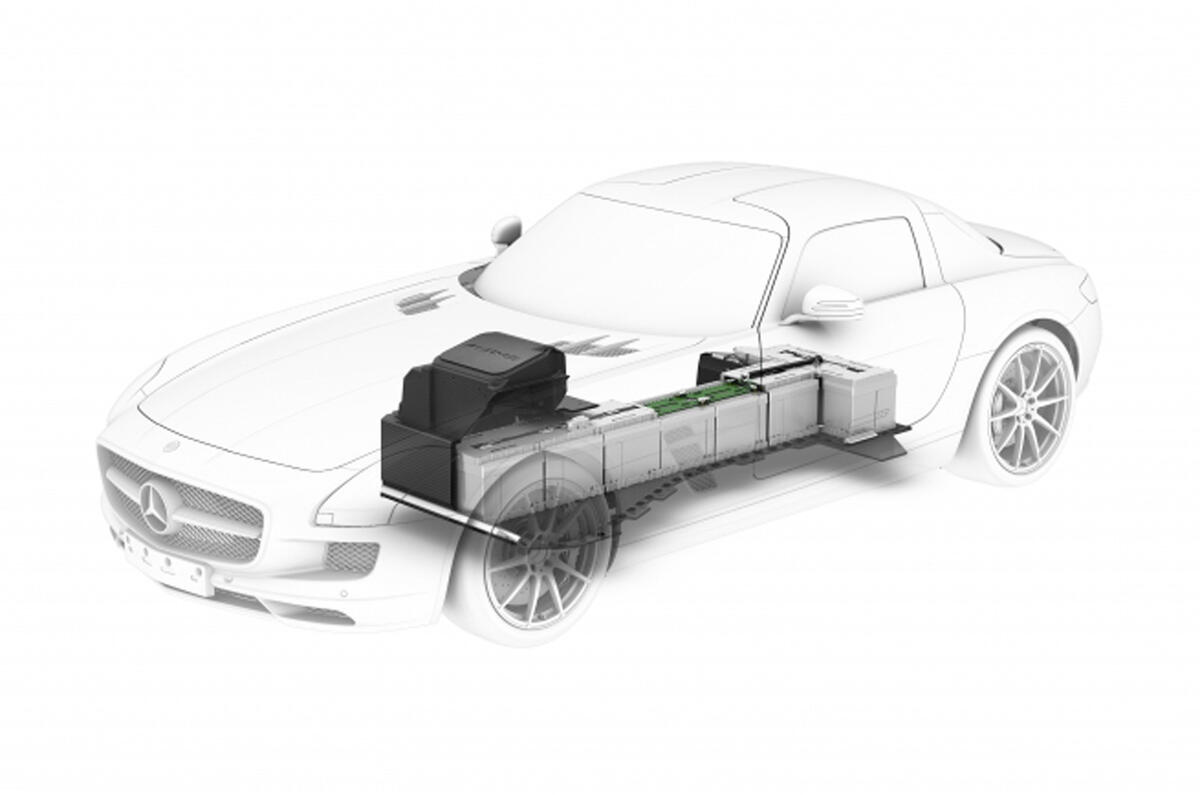Mercedes-Benz has revealed the electric drivetrain system that powers the Mercedes SLS AMG E-Cell project. The drivetrain, which has been in development since 2010, makes use of the German manufacturer’s Formula 1 experience, particularly with the Kinetic Energy Recovery System (KERS).
The E-Cell’s electric powertrain, in development since 2010, has been jointly produced by Merc’s performance arm, AMG, and Mercedes AMG High Performance Powertrains in Brixworth, Northamptonshire.
The system comprises four electric motors located near the wheels that provide a peak power output of 392kW (equivalent to 526bhp) and 649lb ft of torque. The four motors rev to a maximum of 12,000rpm.
The gullwing-doored SLS E-Cell accelerates from 0-62mph in 4.0sec, compared to the 3.8sec taken by the conventionally powered SLS AMG.
Mercedes positioned the motors close to the wheels rather than in the wheel hubs in order to reduce the unsprung masses. The four electric motors and the transmissions are positioned very low down in the vehicle to offer a low centre of gravity and balanced weight distribution.
The 400-volt battery – which comprises 12 modules of 72 lithium-ion polymer cells – is charged by means of targeted recuperation during braking while the car is being driven.
An electronic control system converts the direct current from the high-voltage battery into three-phase alternating current which is required for the synchronous motors and regulates the energy flow for all operating conditions. Other cooling and heating systems maintain the temperature of the battery.
The electric motor system means the E-Cell has permanent four-wheel drive and active torque vectoring, which allows each wheel to be independently braked or driven, depending on conditions.
The carbonfibre transmission tunnel also serves as the monocoque housing for the high-voltage battery modules and is structurally integrated into the E-Cell’s aluminium body shell.
Unlike the existing production version of the AMG SLS, the E-Cell has an independent multi-link front suspension with pushrod damper struts. This is because the vertically arranged damper struts in the conventional SLS had to make way for the additional driveshafts.
The Mercedes SLS AMG E-Cell is expected to go into production in 2013, although only a modest number will be built.





Add your comment